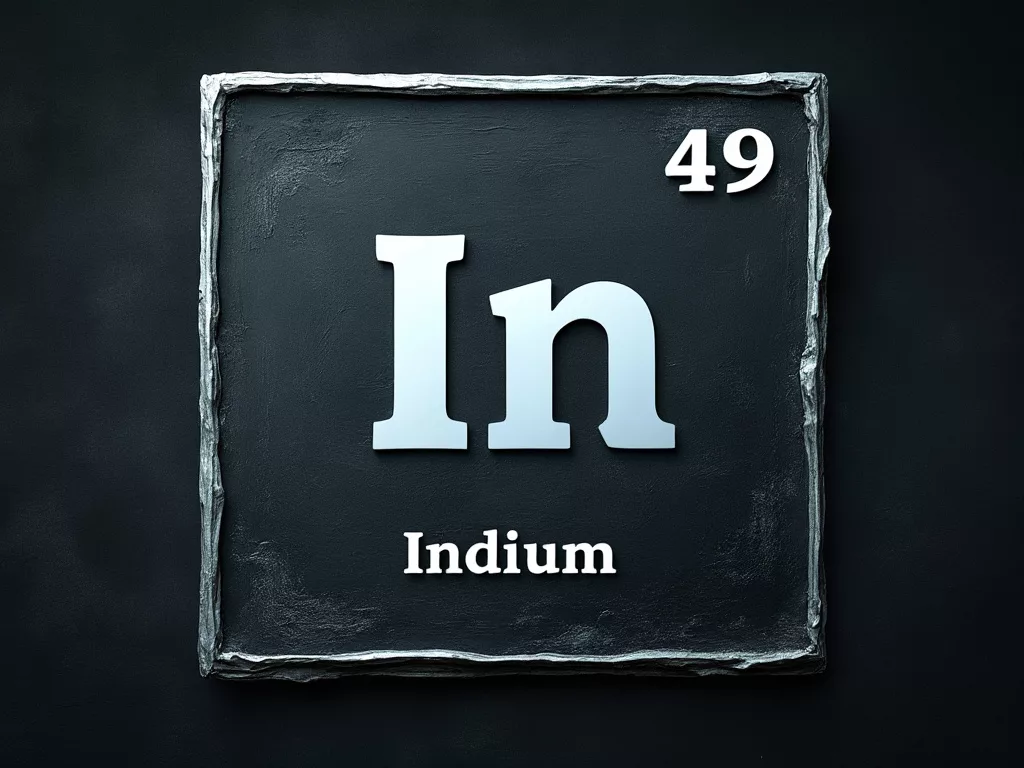Indium, with the atomic number 49 and symbol In, is a soft, silvery-white metal that belongs to the post-transition metals in the periodic table. Its atomic mass is approximately 114.818 u. Indium might not be as well-known as gold or iron, but its unique properties make it extermely crucial in modern technology.
Table of Contents
Why Indium Matters
Indium’s role in technology might surprise you. It’s not just another element; it’s at the heart of many devices we use daily. Here’s why:
- Semiconductors and Solders: Indium is widely used in the semiconductor industry, particularly in the form of indium phosphide (InP). This compound is crucial for making high-frequency and high-efficiency electronic components like lasers and transistors. Its low melting point makes it perfect for soldering, especially in applications where traditional lead-based solders are being phased out due to environmental concerns.
- Transparent Conductors: One of Indium’s most significant contributions is in the form of Indium Tin Oxide (ITO). This compound is transparent and conducts electricity, making it ideal for touch screens, flat panel displays, and solar cells. Every time you swipe your smartphone or tablet, you’re interacting with technology that relies on Indium.
Discovery and Characteristics of Indium
Indium was discovered in 1863 by Ferdinand Reich and Hieronymous Theodor Richter during a spectral analysis of zinc ores. They named it after the indigo blue line in its spectrum.
Here are some key characteristics:
- Physical Properties: Indium is softer than lead, meaning you could cut it with a knife if you had a block of it. It’s so soft that if you bend it, it’ll make a creaking sound. When it melts, which happens at a relatively low temperature of 156.6°C (313.9°F), it wets glass like mercury, which is quite unique among metals.
- Chemical Behavior: Indium is not very reactive at room temperature, which is beneficial for its use in electronics. However, when heated, it can form oxides and other compounds, making it versatile in applications where chemical stability isn’t always required at higher temperatures.
Applications of Indium in Everyday Life
- LED Lights: Indium gallium nitride, another compound of indium, is essential for producing blue and white LEDs. These LEDs are energy-efficient, long-lasting, and have changed how we light our homes and cities.
- Anti-Corrosion: Indium coatings are used in cryogenic equipment because they can prevent the embrittlement of metals like aluminum and copper at very low temperatures.
- Medical Applications: While not as common, indium isotopes have found uses in medical diagnostics, particularly in imaging techniques.
See also: Gallium Liquid Metal
Supply and Sustainability of Indium
Indium’s supply chain is worth discussing because, unlike more abundant elements, indium is relatively scarce. Most of the world’s indium comes as a byproduct of zinc mining. This scarcity raises concerns about sustainability, especially with the increasing demand from the tech industry. Efforts to recycle Indium from old electronics are gaining traction, but the challenge lies in making recycling economically viable.
Future Prospects of Indium
As technology evolves, so does the demand for Indium. Research is ongoing into alternative materials that might reduce our dependency on this element, but for now, Indium’s unique properties, from quantum dots in displays to potential uses in quantum computing, make it irreplaceable in many niche applications.
Conclusion
Indium might not be the flashiest element on the periodic table, but its contributions to technology are profound. It’s a reminder of how elements with seemingly modest properties can become pivotal in our tech-driven world. As we continue to innovate, Indium’s role might evolve, but for now, it remains a cornerstone in the foundation of our digital lives.

























